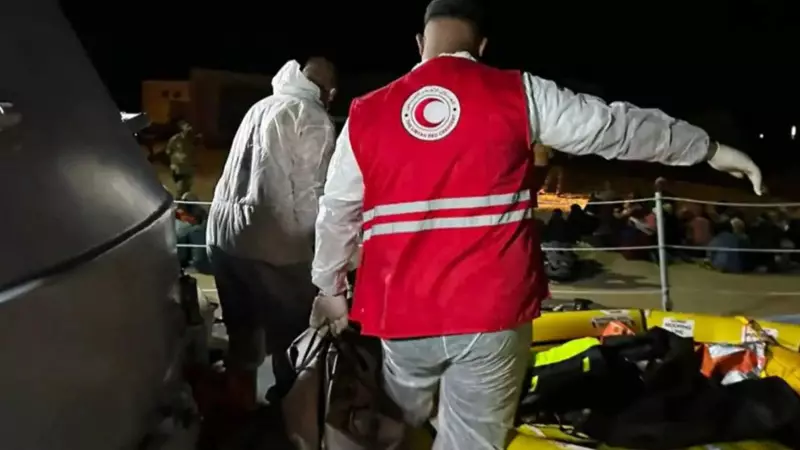
At least four people have died and dozens remain missing after two migrant boats capsized off the coast of Libya in separate incidents, according to the Libyan Red Crescent. The tragic events highlight the continuing dangers faced by migrants attempting the perilous Mediterranean crossing to Europe.
Details of the Twin Tragedies
The first boat capsized near the western city of Sabratha, a major departure point for migrants attempting to reach Europe. Libyan Red Crescent spokesperson Taher al-Tablawi confirmed that their teams recovered three bodies from this incident. The vessel was carrying approximately 25 migrants when it encountered trouble in the Mediterranean waters.
In a separate incident east of the capital Tripoli, another boat met the same fate. Rescue teams recovered one body from this capsizing, while the fate of numerous other passengers remains unknown. The exact number of people aboard this second vessel has not been confirmed, adding to the uncertainty surrounding the total number of missing individuals.
Ongoing Rescue Operations
Search and rescue operations continue in both areas, though the challenging conditions and limited resources have hampered efforts. The Libyan Red Crescent has been leading the response, working against time to locate potential survivors in the vast Mediterranean Sea.
The Mediterranean crossing remains one of the world's most dangerous migration routes, with thousands of people losing their lives attempting to reach European shores. Many migrants embark on these dangerous journeys in overcrowded, unseaworthy vessels operated by human traffickers who exploit their desperation.
Broader Context of Mediterranean Migration
These latest incidents add to the growing death toll in the central Mediterranean, which has seen a significant increase in migrant departures from Libya and Tunisia in recent months. According to international organizations, the route has become increasingly deadly due to worsening conditions and reduced state-led rescue operations.
Libya has become a major hub for human trafficking since the 2011 uprising that overthrew longtime ruler Muammar Gaddafi. The country's political instability and ongoing conflict have created conditions where smuggling networks can operate with relative impunity.
Migrants attempting the crossing typically come from various African countries, including Nigeria, Ghana, Sudan, and Eritrea, fleeing conflict, poverty, and political persecution. Many endure horrific conditions in detention centers in Libya before even attempting the sea crossing.
International organizations have repeatedly called for enhanced search and rescue capabilities in the Mediterranean and safer legal pathways for migration to prevent such tragedies. However, political disagreements among European nations have complicated coordinated responses to the ongoing humanitarian crisis.
The Libyan coast guard, which receives training and support from the European Union, has intercepted and returned thousands of migrants to Libya this year alone. However, human rights organizations have criticized these returns, citing the dangerous conditions migrants face in Libyan detention centers.
As rescue operations continue off Libya's coast, the international community faces renewed questions about how to address the root causes of migration while ensuring the safety and dignity of those desperate enough to risk everything on the deadly Mediterranean crossing.





